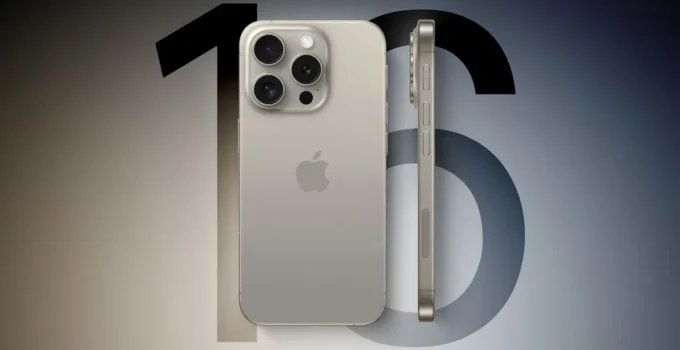Revolutionizing Display Technology: The iPhone 16’s Leap Forward. Apple’s upcoming iPhone 16 is poised to set a new standard in smartphone display efficiency. Next year’s model is rumored to feature a cutting-edge OLED display, crafted with a novel material specifically developed by Samsung at Apple’s behest.
This new material incorporates ‘capping layers’ (CPL), which are high-refractive membranes positioned atop the screen. These layers play a crucial role in enhancing the optical characteristics of the display. They are the result of meticulous engineering by specialist manufacturers who supply these components to Samsung for the final assembly of the panels.
The innovation lies in the material composition, which allows for significant improvements in the OLED panel’s attributes. These enhancements include increased durability, higher brightness, more precise color representation, and improved production efficiency.
Earlier this year, a South Korean tech news outlet reported that Samsung was planning to utilize a material named ‘M12’ for the iPhone 15 series, while simultaneously developing ‘M14’, a material specifically intended for 2024’s iPhone models. The motivation behind Apple’s request for new materials is likely driven by the pursuit of greater energy efficiency in their displays.
It’s reported that Samsung’s ongoing OLED development includes transitioning to more energy-efficient phosphorescent blue emitting materials. This shift is expected to substantially lower the overall energy consumption of the displays.
Industry analysts suggest that Samsung initially aimed to use this new, more efficient OLED material in some of its foldable devices slated for 2024. However, the complexity of developing ‘M14’ might have led Samsung to prioritize its application in Apple’s products first.
Insiders predict that after debuting in the iPhone 16, the ‘M14’ material will be adopted in the iPhone 17 in 2025, indicating a two-year utilization phase for this technology. Early whispers about the iPhone 16 and its Pro variant hint at larger displays, with sizes of 6.27 inches for the iPhone 16 Pro and 6.85 inches for the iPhone 16 Pro Max. These models are also expected to feature advancements such as 5G Advanced, WiFi 7, and other innovative features.
In summary, the iPhone 16 is shaping up to be a trailblazer in smartphone display technology, heralding a new era of efficiency and performance. This development not only underscores Apple’s commitment to innovation but also highlights the symbiotic relationship between Apple and its component suppliers in pushing the boundaries of what’s possible in smartphone technology.



